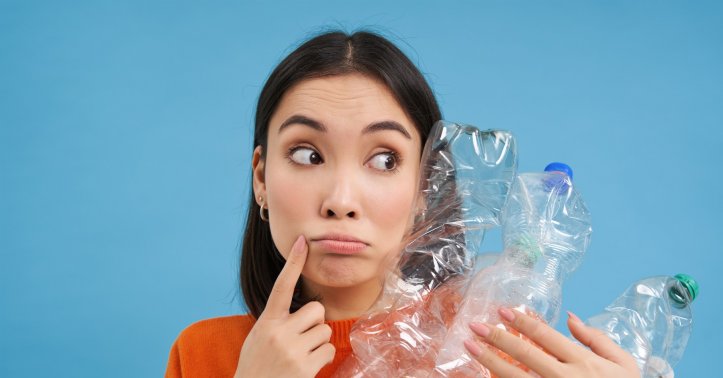
Avoiding microplastics
Avoiding microplastics completely is nearly impossible because they are now pervasive in our environment, from the air we breathe to remote mountain lakes. However, you can significantly reduce your exposure by making conscious choices in key areas of your life.
Here is a comprehensive guide on how to avoid microplastics, broken down into categories.
1. In Your Diet and Kitchen
This is one of the most significant areas where you can make a difference.
-
Avoid Plastic Food Containers:
-
Never heat food in plastic. This includes microwaving, dishwashers (place plastic on the top rack away from the heating element), or leaving a plastic water bottle in a hot car. Heat dramatically increases the leaching of microplastics and chemicals like BPA.
-
Store food in glass, stainless steel, or ceramic containers instead of plastic Tupperware.
-
Let hot food cool completely before placing it in any plastic container.
-
-
Choose Alternatives to Plastic Wrap:
-
Use beeswax wraps, silicone lids, or simply place a plate over a bowl.
-
-
Be Mindful of Your Water Source:
-
Tap Water: If your municipal water is safe to drink, it often has fewer microplastics than bottled water. However, older pipes can be a source.
-
Filter Your Tap Water: Use a high-quality water filter. Reverse Osmosis (RO) filters are the most effective at removing microplastics. Carbon block filters (not granular carbon) are also very good.
-
Avoid Single-Use Plastic Water Bottles. They are a major source of microplastic ingestion. Switch to a reusable bottle made of stainless steel or glass.
-
-
Reduce Consumption of Highly Processed Foods:
-
Their processing and packaging often lead to higher microplastic content.
-
-
Be Cautious with Seafood:
-
Microplastics bioaccumulate in marine life, especially in filter feeders like shellfish and small fish. You don't need to eliminate them, but be aware they can be a higher source.
-
2. In Your Home Environment
-
Dust Regularly with a Wet Cloth:
-
Household dust is a significant source of microplastics (from shedding from textiles, furniture, etc.). Wet-dusting and using a HEPA-filter vacuum cleaner can effectively capture this dust instead of just stirring it into the air.
-
-
Ventilate Your Home:
-
Open windows regularly to allow indoor air, which can be more polluted with microplastics than outdoor air, to circulate out.
-
-
Choose Natural Fibers for Furnishings:
-
When possible, opt for rugs, curtains, and furniture made from natural materials like wool, cotton, hemp, or linen instead of synthetic ones like polyester, nylon, or acrylic.
-
3. In Your Clothing and Laundry
Synthetic clothing (polyester, nylon, acrylic, fleece) is a massive source of microplastic pollution, shedding fibers in the wash that enter waterways.
-
Wash Less Often: Only wash clothes when they are actually dirty.
-
Use a Guppyfriend Washing Bag or Cora Ball: These products are designed to catch microfibers shed during the wash cycle.
-
Wash with Cold Water and a Shorter Cycle: Aggressive washing (hot water, long cycles) causes more shedding.
-
Avoid the Tumble Dryer: Air-drying produces far fewer microfibers than machine drying. If you must use a dryer, make sure its vent doesn't empty into the open environment (most don't).
-
Buy Clothes Made from Natural Fibers: Choose cotton, wool, linen, bamboo (lyocell/tencel is a more sustainable process), or hemp when you can.
4. In Your Personal Care Products
-
Avoid Products with Microbeads: Microbeads were common in exfoliating scrubs and toothpastes but have been banned in many countries. However, check your product labels for polyethylene (PE), polypropylene (PP), or polystyrene (PS) and avoid them.
-
Choose Solid Toiletries: Switch to bar soap, shampoo bars, and conditioner bars. They require little to no plastic packaging.
-
Use a Plastic-Free Toothbrush: Consider a toothbrush with a bamboo handle and replaceable head to reduce plastic waste.
5. For Parents and Caregivers
-
Avoid Plastic Baby Bottles: Opt for glass or stainless-steel bottles. If you use plastic, never heat formula or milk in them directly; warm them in a glass container first and then transfer.
-
Choose Wooden or Silicone Toys: Instead of plastic toys, opt for those made from natural materials or high-quality, food-grade silicone.
-
Avoid Plastic Dishware for Kids: Use stainless steel, bamboo, or ceramic plates and cups.
Summary: Top 5 High-Impact Actions
If this feels overwhelming, start with these five changes that will have the biggest impact:
-
Stop microwaving food in plastic.
-
Stop drinking from single-use plastic water bottles. Use a reusable glass or steel bottle and filter your tap water.
-
Use a microfiber-catching laundry bag (like Guppyfriend) when washing synthetic clothes.
-
Dust and vacuum regularly with a HEPA filter.
-
Choose natural fibers for clothing and home furnishings when you can.
Remember, the goal is reduction, not perfection. Microplastics are a global pollution problem that requires systemic and industrial change. Your individual choices are powerful not only for reducing your personal exposure but also for creating demand for better products and supporting broader policy changes. Every step you take makes a difference.
By Jamuna Rangachari








